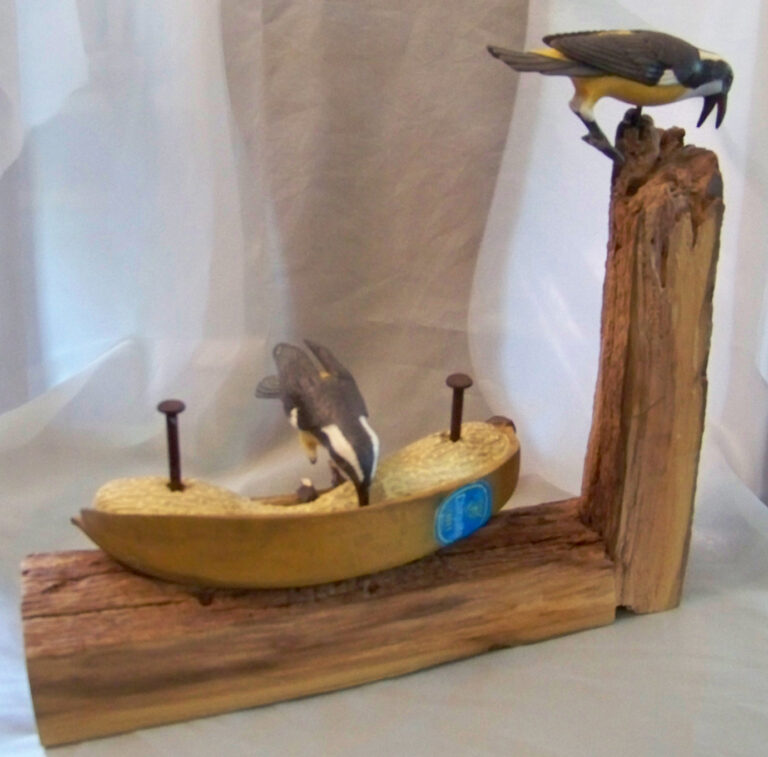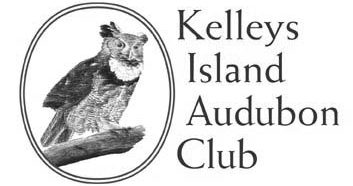Crabill Carved Birds
Win this beautiful carving of two Bananaquit birds feasting on a banana. Order your tickets NOW – they are just $5.00 each and only 100 will be sold. Proceeds will be used to further the Kelleys Island Audubon Club’s programs and mission.


Byron Crabill has outdone himself again this year. The detail is amazing. We particularly liked the Chiquita Banana sticker on the back of the banana! Byron is an island resident and talented carver. He has received many awards for his craftsmanship.
What exactly is a BANAQUIT bird?
The Bananaquit is a small bird, although there is some degree of size variation across the various subspecies. It is resident in tropical South America north to southern Mexico and the Caribbean. It is found throughout the West Indies, except for Cuba. Birds from the Bahamas are rare visitors to Florida. It prefers a wide range of open to semi-open habitats, including gardens and parks, but it is rare or absent in deserts and dense forests (e.g. large parts of the Amazon rainforest).
The Bananaquit has a slender, curved bill, adapted to taking nectar from flowers and mistletoes. It sometimes pierces flowers from the side, taking the nectar without pollinating the plant – known as nectar robbing. It also feeds on fruits – including mistletoe fruits and ripe bananas. It has been observed taking a fruits’ sweet juices by puncturing fruit with its beak, and will eat small insects and other small arthropods on occasion.
While feeding, the Bananaquit must always perch as it cannot hover like a hummingbird.
The Bananaquit is known for its ability to adjust remarkably to human environments. It often visits gardens and may become very tame. Its nickname, the sugar bird, comes from its affinity for bowls or bird feeders stocked with granular sugar, a common method of attracting these birds.
The Bananaquit builds a spherical lined nest with a side entrance hole, laying up to three eggs, which are incubated solely by the female. It may also build its nest in human-made objects, such as lampshades and garden trellises. The birds breed all year regardless of season and build new nests throughout the year.
